Einführung
Denken Sie darüber nach, Ihren Raum mit selbstklebenden Fliesen neu zu gestalten, sind sich aber unsicher, wie man sie auf gestrichenen Wänden installiert? Keine Sorge! Egal, ob Sie ein DIY-Enthusiast sind oder gerade erst anfangen, dieser Leitfaden führt Sie durch den Prozess und sorgt für ein makelloses Ergebnis. Wussten Sie, dass eine unsachgemäße Fliesenverlegung zu einer kostspieligen Neuverlegung führen kann? Hier erklären wir die Schritte und heben häufige Stolperfallen hervor, damit Sie auf Erfolgskurs bleiben!
Vorbereitung Ihres Arbeitsbereichs
Bevor Sie mit Ihren DIY-Fliesenanleitungen beginnen, ist es wichtig, Ihren Arbeitsplatz vorzubereiten.
Reinigung der Wände
- Staub und Schmutz entfernen: Staub und Schmutz können verhindern, dass Fliesen richtig haften.
- Verwenden Sie einen milden Reiniger: Harte Chemikalien können den Lack beschädigen.
- Stellen Sie sicher, dass die Wände trocken sind: Feuchtigkeit kann den Klebstoff schwächen.
Zuerst ist das Entfernen von Staub und Schmutz unerlässlich. Staub kann eine Barriere zwischen Ihrer Wand und dem Fliesenkleber bilden, was zu einer schwachen Haftung führt. Verwenden Sie ein sauberes Tuch, um Ihre Wände abzuwischen.
Ein mildes Reinigungsmittel hilft, versteckten Schmutz zu entfernen, ohne die Wandfarbe zu beschädigen. Wählen Sie etwas Sanftes; verwenden Sie ein feuchtes Tuch oder einen Schwamm.
Zuletzt ist es wichtig, sicherzustellen, dass Ihre Wände trocken sind. Wenn noch Feuchtigkeit vorhanden ist, kann dies die Wirksamkeit des Klebstoffs beeinträchtigen. Lassen Sie nach der Reinigung ausreichend Trocknungszeit.
Bewertung des Wandzustands
- Auf Risse oder abblätternde Farbe prüfen: Diese können die ordnungsgemäße Haftung der Fliesen behindern.
- Unebenheiten ausgleichen: Unebene Wände können dazu führen, dass Fliesen nicht richtig ausgerichtet sind.
- Sandraue Flächen: Sorgt für eine glatte Oberfläche bei der Fliesenverlegung.
Untersuchen Sie Ihre Wände auf Risse oder abblätternde Farbe. Diese Unvollkommenheiten können die ordnungsgemäße Verklebung der Fliesen behindern und zu Haftungsproblemen führen. Reparieren Sie alle Schäden, bevor Sie beginnen.
Stellen Sie sicher, dass Ihre Wandoberfläche eben ist. Eine unebene Oberfläche kann die Fliesenanordnung erschweren und sichtbare Fugen verursachen. Verwenden Sie Schleifpapier, um raue Stellen zu glätten.
Notwendige Werkzeuge sammeln
- Maßband: Für genaue Messungen.
- Level: Sorgt für gerade Linien und korrekte Ausrichtung.
- Universalmesser: Für präzises Fliesenschneiden.
Sie benötigen ein Maßband, um sicherzustellen, dass Sie genügend Fläche abdecken. Genaue Messungen sind entscheidend, um unnötige Fliesenschnitte und Ausrichtungsprobleme zu vermeiden.
Eine Wasserwaage hilft Ihnen, gerade Linien zu halten, was für ein sauberes und professionelles Finish entscheidend ist. Sie stellt sicher, dass Ihre Fliesen nicht schief erscheinen.
Das Universalmesser ist unerlässlich zum Schneiden von Fliesen. Es ermöglicht präzise Schnitte, sodass die Fliesen perfekt um Ecken und Kanten passen.
Schritt-für-Schritt Installationsprozess an gestrichenen Wänden
Messen Sie Ihre Fläche
- Wandmaße messen: Um zu bestimmen, wie viele Fliesen Sie benötigen.
- Markieren Sie Brennpunkte: Hilft bei der Ausrichtung und Optimierung der visuellen Wirkung.
- Maße doppelt überprüfen: Sorgt für Genauigkeit vor dem Schneiden oder Verlegen der Fliesen.
Beginnen Sie damit, die Maße Ihrer Wand zu messen. Dies hilft Ihnen, die Anzahl der für Ihr Projekt benötigten Fliesen abzuschätzen. Denken Sie daran, dass es immer eine gute Idee ist, ein paar zusätzliche Fliesen zu kaufen.
Markieren Sie Brennpunkte an Ihrer Wand. Diese Punkte dienen als visuelle Hilfsmittel, um Fliesen für ein nahtloses Erscheinungsbild auszurichten. Sie helfen auch bei der Ausrichtung des Fliesenmusters.
Überprüfen Sie alle Maße doppelt, um Fehler zu vermeiden. Genaue Messungen sparen Zeit und verhindern den Aufwand unnötigen Zuschneidens.
Zeichenrichtlinien für Präzision
- Benutze einen Bleistift: Leicht zu radieren, wenn du einen Fehler machst.
- Gerade Linien zeichnen: Stellt sicher, dass die Kacheln perfekt ausgerichtet sind.
- Fliesenlayout planen: Bevor Sie die Fliesen kleben, planen Sie das Design.
Verwenden Sie einen Bleistift, um gerade Linien an Ihrer Wand zu zeichnen, die die Platzierung der Fliesen leiten. Diese Linien sorgen dafür, dass Ihre Fliesen ausgerichtet und gerade sind.
Planen Sie Ihr Fliesenlayout im Voraus. Dieser Schritt ermöglicht es Ihnen, das endgültige Aussehen zu visualisieren und notwendige Anpassungen vorzunehmen, bevor Sie die Fliesen verlegen.
Ausgehend von einem Brennpunkt
- Wählen Sie einen zentralen Punkt: Beginnen Sie in der Mitte und bewegen Sie sich nach außen.
- Symmetrie sicherstellen: Dies verbessert das Gesamtbild.
- In kleinen Abschnitten arbeiten: Vermeidet Überforderung und sorgt für Genauigkeit.
Beginnen Sie damit, einen zentralen Mittelpunkt an Ihrer Wand auszuwählen. Hier werden Sie mit dem Anbringen der Fliesen beginnen. Von innen nach außen zu arbeiten, sorgt für Symmetrie und Ausgewogenheit in Ihrem Design.
Achten Sie auf Symmetrie bei der Verlegung Ihrer Fliesen. Das sorgt für ein harmonisches Erscheinungsbild, das optisch ansprechend ist. Wenn Sie in der Mitte beginnen, fällt es Ihnen leichter, ein ausgewogenes Ergebnis zu erzielen.
Arbeiten Sie in kleinen Abschnitten, um ein Überwältigtsein zu vermeiden. Es ermöglicht Ihnen auch, sich auf Präzision zu konzentrieren und das Risiko von Fehlern zu verringern.
Die Fliesen richtig verlegen
- Trägerpapier abziehen: Langsam vorgehen, um den Klebstoff nicht zu beschädigen.
- Fest drücken: Sorgt für vollständigen Kontakt mit der Wand.
- Luftblasen entfernen: Verwenden Sie für beste Ergebnisse ein Glättwerkzeug.
Ziehen Sie vorsichtig das Trägerpapier von jeder Fliese ab. Wenn Sie dies langsam tun, wird eine Beschädigung des Klebers vermieden, was eine starke Verbindung gewährleistet.
Drücken Sie jede Fliese fest gegen die Wand, um vollständigen Kontakt sicherzustellen. Dieser Schritt ist entscheidend, um die Haftung der Fliesenoberfläche und die Klebstoffprüfung zu gewährleisten.
Nachdem Sie eine Fliese verlegt haben, verwenden Sie ein Glättwerkzeug, um Luftblasen zu entfernen. Dies stellt sicher, dass Ihre Fliesen flach an der Wand liegen und einen nahtlosen Effekt erzeugen.
Häufige Fehler bei der Installation
Die Oberfläche nicht ausreichend vorbereiten
- Reinigung überspringen: Führt zu schlechter Haftung.
- Reparaturen ignorieren: Risse können dazu führen, dass Fliesen abfallen.
- Nicht ausgerichtet: Führt zu falsch ausgerichteten Fliesen.
Das Überspringen des Reinigungsschritts kann zu schlechter Haftung führen. Staub und Schmutz wirken als Barrieren, die den Halt des Klebstoffs an der Wand schwächen.
Das Ignorieren notwendiger Reparaturen, wie das Ausfüllen von Rissen, kann dazu führen, dass Fliesen abfallen. Es ist entscheidend, Unvollkommenheiten zu beheben, bevor Sie mit Ihrem Projekt beginnen.
Wenn Sie Ihre Wand nicht ausrichten, führt dies zu schiefen Fliesen. Unebene Oberflächen erschweren es, Fliesen gleichmäßig auszurichten, was sichtbare Fugen erzeugt.
Herstelleranweisungen ignorieren
- Angenommen, alle Fliesen sind gleich: Jede Marke könnte unterschiedliche Anforderungen haben.
- Empfohlene Werkzeuge überspringen: Die Verwendung falscher Werkzeuge kann Fliesen beschädigen.
- Heilzeiten übersehen: Klebstoff benötigt Zeit, um richtig zu haften.
Die Annahme, dass alle Fliesen gleich sind, kann zu Fehlern führen. Jede Marke könnte spezifische Anweisungen haben, daher sollten Sie immer die Herstelleranweisungen lesen.
Das Überspringen der empfohlenen Werkzeuge kann Ihre Fliesen beschädigen. Verwenden Sie stets die vom Hersteller vorgeschlagenen Werkzeuge, um eine sichere und effektive Fliesenverlegung zu gewährleisten.
Das Übersehen der Aushärtezeiten beeinträchtigt die Klebekraft. Dem Klebstoff Zeit zum Aushärten zu geben, ist für eine langfristige Haftung unerlässlich.
Fehlausrichtungen verursachen sichtbare Nähte
- Den Prozess überstürzen: Führt zu Fehlern und ungleichmäßiger Platzierung.
- Nichtbeachtung der Richtlinien: Führt zu schiefen Fliesen.
- Das Versäumnis, noch einmal zu überprüfen: Sorgt für gerade Linien.
Das Überstürzen des Prozesses führt oft zu Fehlanpassungen. Wenn Sie sich Zeit nehmen, vermeiden Sie Fehler und erreichen eine perfekte Platzierung.
Das Vernachlässigen der Verwendung Ihrer Richtlinien kann zu schiefen Fliesen führen. Beziehen Sie sich stets auf Ihre gezeichneten Linien, um eine gerade Platzierung sicherzustellen.
Überprüfen Sie Ihre Arbeit häufig doppelt. Diese Gewohnheit stellt sicher, dass Ihre Fliesen während des gesamten Projekts gerade und ausgerichtet bleiben.
Tipps für ein professionelles Finish
Sicherstellung der Fliesenhaftung
- Gleichmäßigen Druck ausüben: Sorgt dafür, dass die Fliesen richtig haften.
- Testhaftung: Überprüfen Sie vor dem Fortfahren die Haftfestigkeit.
- Bei Bedarf verstärken: Verwenden Sie zusätzlichen Klebstoff für hartnäckige Stellen.
Üben Sie gleichmäßigen Druck auf jede Fliese aus, um sicherzustellen, dass sie richtig haftet. Dieser Schritt ist entscheidend für eine starke Haftung und langfristige Haltbarkeit.
Testen Sie die Haftung, indem Sie vorsichtig an einigen Fliesen ziehen. Wenn sie sich leicht lösen, üben Sie mehr Druck aus oder fügen Sie zusätzlichen Klebstoff hinzu.
Verstärken Sie Problemstellen bei Bedarf mit zusätzlichem Klebstoff. Einige Stellen könnten besondere Aufmerksamkeit für eine starke Verbindung erfordern.
Fliesen schneiden ohne Beschädigung
- Verwenden Sie ein scharfes Universalmesser: Sorgt für saubere Schnitte.
- Score- und Abbrechmethode: Effektiv für gerade Schnitte.
- Vorsichtig zuschneiden: An Kanten und Ecken.
Ein scharfes Universalmesser ist unerlässlich, um Fliesen ohne Beschädigung zu schneiden. Es sorgt jedes Mal für saubere, präzise Schnitte.
Die Ritz- und Bruchmethode ist effektiv, um gerade Schnitte zu erzeugen. Ritzen Sie die Fliese leicht mit dem Messer an und brechen Sie sie dann entlang der angeritzten Linie.
Schneiden Sie die Fliesen sorgfältig an den Kanten und Ecken zu. Nehmen Sie sich Zeit, um saubere Schnitte zu gewährleisten, die perfekt passen.
Abstandstipps für nahtlosen Effekt
- Abstandshalter verwenden: Für gleichmäßige Abstände zwischen den Fliesen.
- Bei Bedarf anpassen: Um die visuelle Konsistenz zu wahren.
- Endausrichtung überprüfen: Vor dem Aushärten des Klebstoffs.
Die Verwendung von Abstandshaltern hilft, gleichmäßige Abstände zwischen den Fliesen zu gewährleisten. Dieses einfache Werkzeug sorgt für ein einheitliches, professionelles Erscheinungsbild.
Passen Sie die Fliesen bei Bedarf an, um die visuelle Konsistenz zu wahren. Wenn eine Fliese fehl am Platz erscheint, beheben Sie dies, bevor der Klebstoff aushärtet.
Überprüfen Sie die endgültige Ausrichtung, bevor der Klebstoff vollständig aushärtet. Diese abschließende Kontrolle ermöglicht es Ihnen, notwendige Anpassungen für ein makelloses Ergebnis vorzunehmen.
Interne Links und Merchandise
Für eine nahtlose Installation könnten Sie die Stickwoll Timberline Checks Peel-and-Stick-Fliesen oder die Stickwoll Crimson Horizon Fliesen in Betracht ziehen. Beide sind ausgezeichnete Optionen für eine moderne Fliesenlösung, die anfängerfreundlich und mieterfreundlich ist.
Wenn Sie mehr über die spezifischen Eigenschaften der Stickwoll-Fliesen erfahren möchten, können Sie meine ausführliche Bewertung hier nachlesen.
Erkunden Sie auch, wie diese Fliesen in Kücheneinstellungen effektiv verwendet werden können, indem Sie diesen Blogbeitrag besuchen.
Abschluss
Das Anbringen von selbstklebenden Fliesen an gestrichenen Wänden kann jeden Raum verwandeln und sorgt für ein frisches, modernes Aussehen, ohne den Aufwand herkömmlicher Fliesenmethoden. Eine sorgfältige Vorbereitung und das Befolgen der hier beschriebenen Schritte helfen Ihnen, ein professionelles Ergebnis zu erzielen. Vermeiden Sie häufige Fehler und nutzen Sie die gegebenen Tipps, um Ihr DIY-Erlebnis zu verbessern. Ob Sie Ihr Interieur auffrischen oder eine neue Rückwand hinzufügen möchten, selbstklebende Fliesen sind eine praktische und stilvolle Lösung.
Häufig gestellte Fragen
Q1: Kann ich selbstklebende Fliesen auf strukturierten Wänden anbringen?
Ja, aber es erfordert zusätzliche Vorbereitung. Schleifen Sie die Textur ab, um eine glattere Oberfläche für eine bessere Haftung zu schaffen.
Q2: Wie kann ich Luftblasen nach der Fliesenverlegung entfernen?
Verwenden Sie ein Glättwerkzeug oder eine Kreditkarte, um die Luftblasen sanft zu den Rändern der Fliese zu schieben.
Q3: Gibt es bestimmte Bedingungen, unter denen Peel-and-Stick-Fliesen möglicherweise nicht funktionieren?
Ja, extreme Temperaturen und Bereiche mit hoher Feuchtigkeit können den Klebstoff schwächen. Verwenden Sie Fliesen, die für solche Bedingungen geeignet sind.
Q4: Können Peel-and-Stick-Fliesen entfernt werden, ohne die Wände zu beschädigen?
Ja, die meisten Marken sind so konzipiert, dass sie sich leicht entfernen lassen, ohne die Wand erheblich zu beschädigen. Befolgen Sie stets die Entferneranweisungen des Herstellers für beste Ergebnisse.
Für weitere Einblicke, wie man Fliesen austauscht, können Sie meinen Artikel hier lesen.

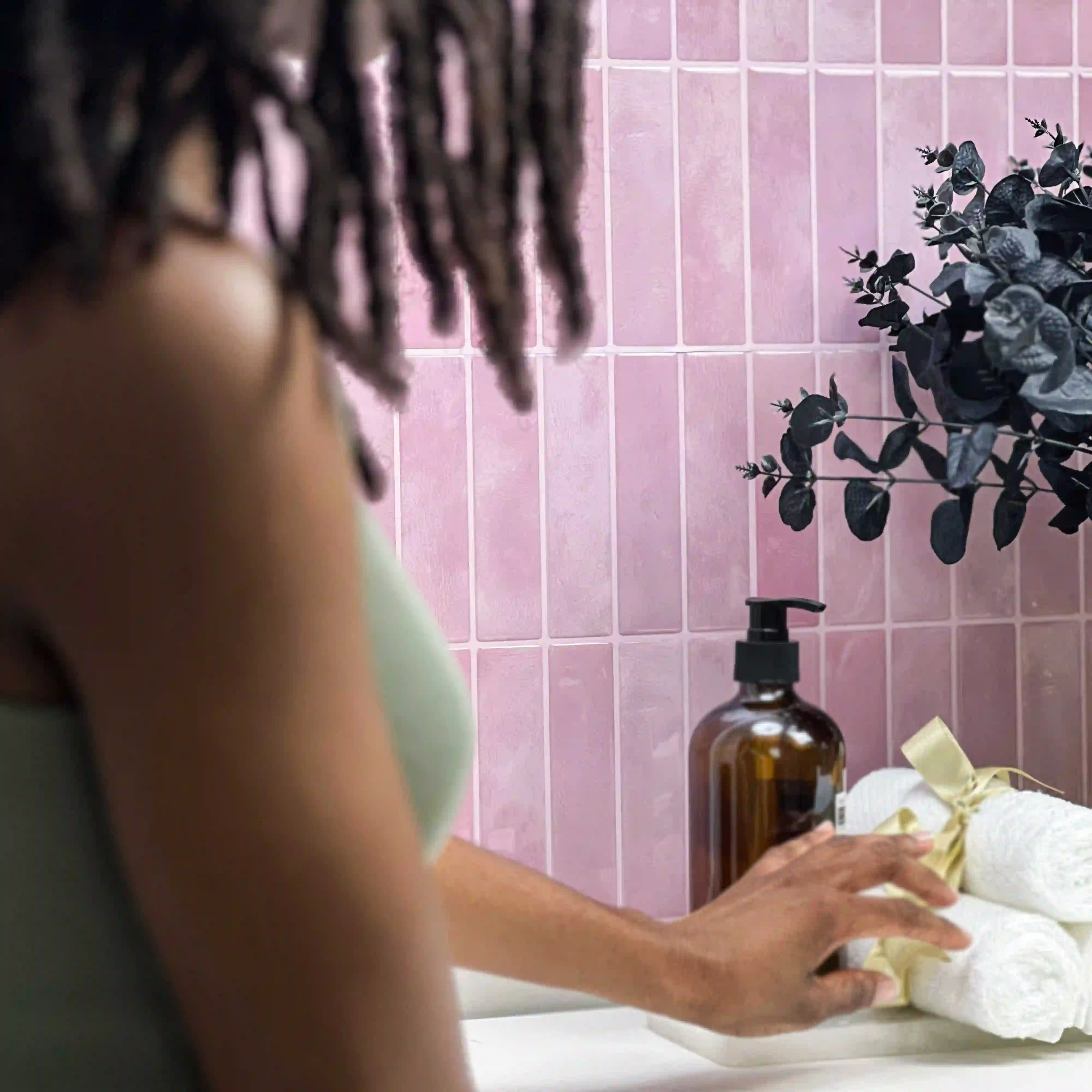
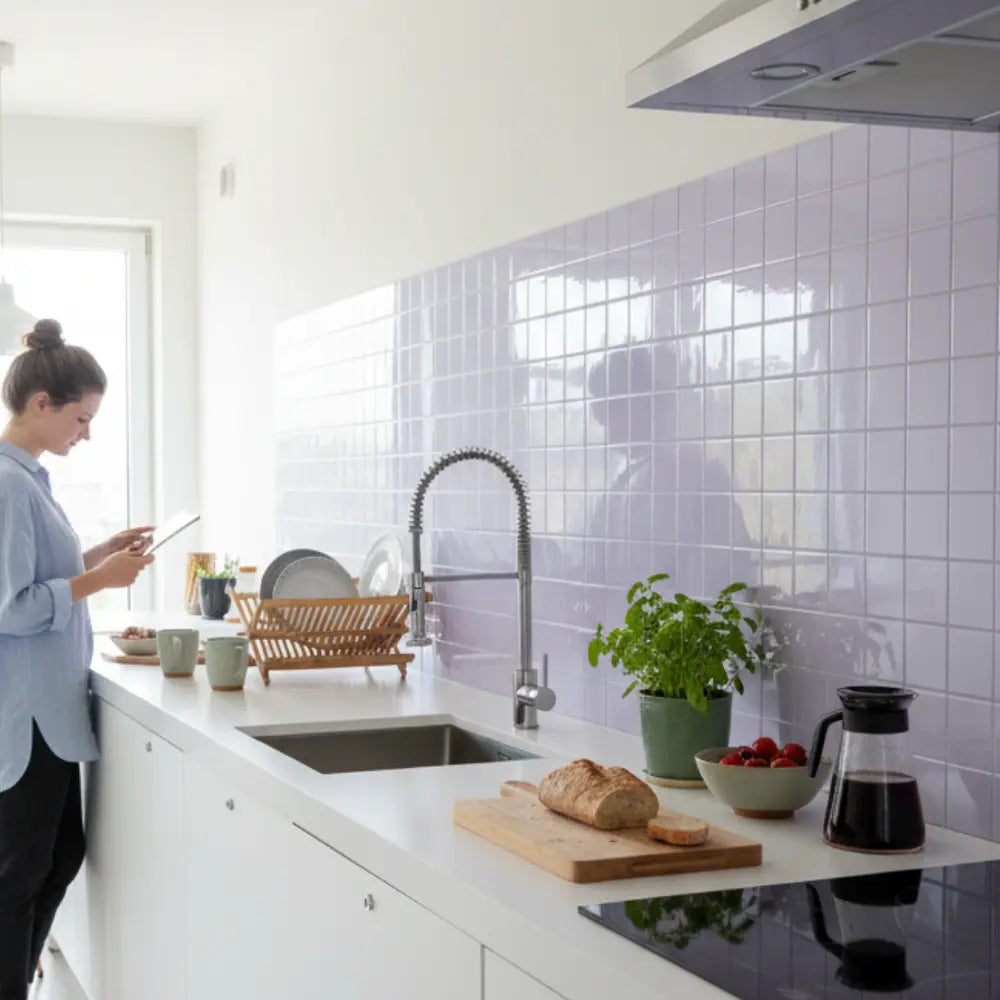
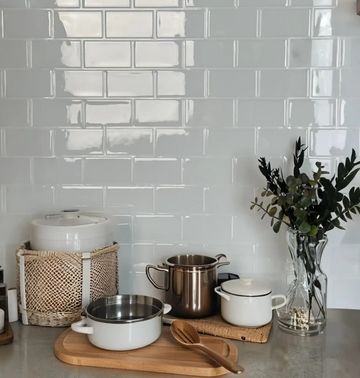
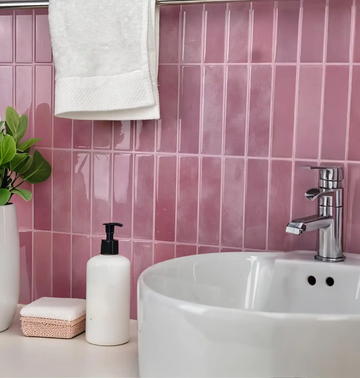
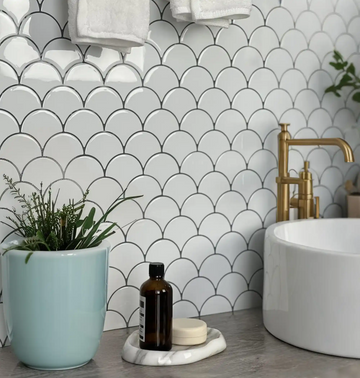
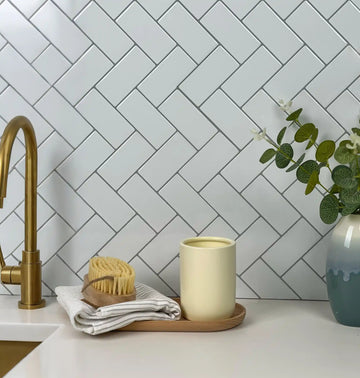
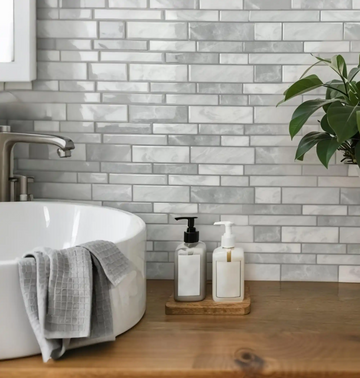
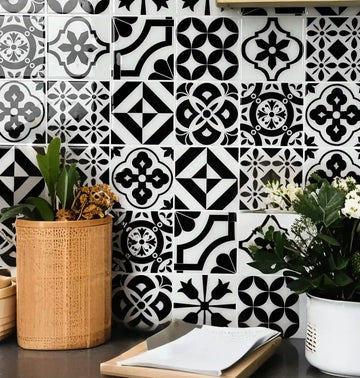
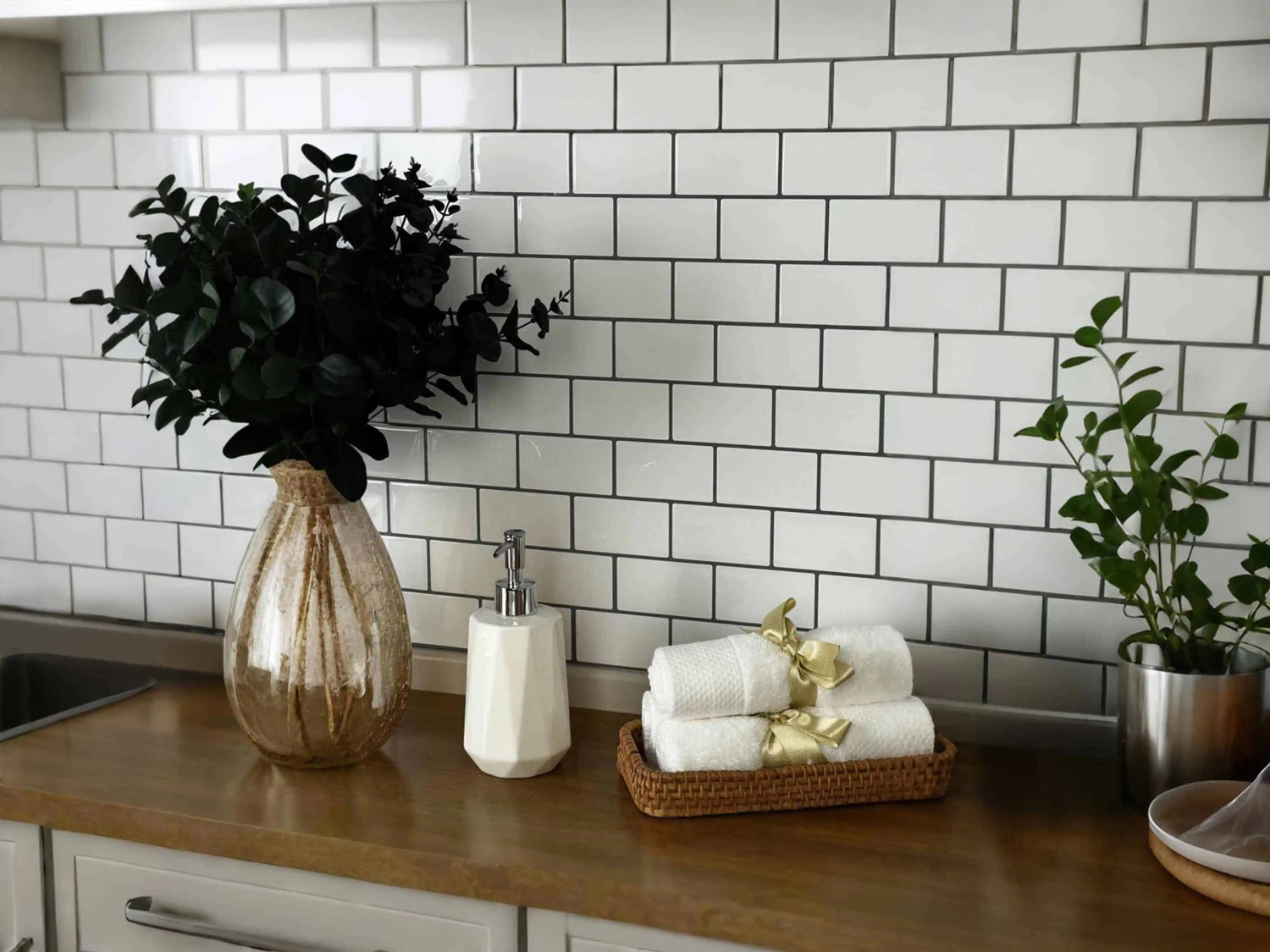
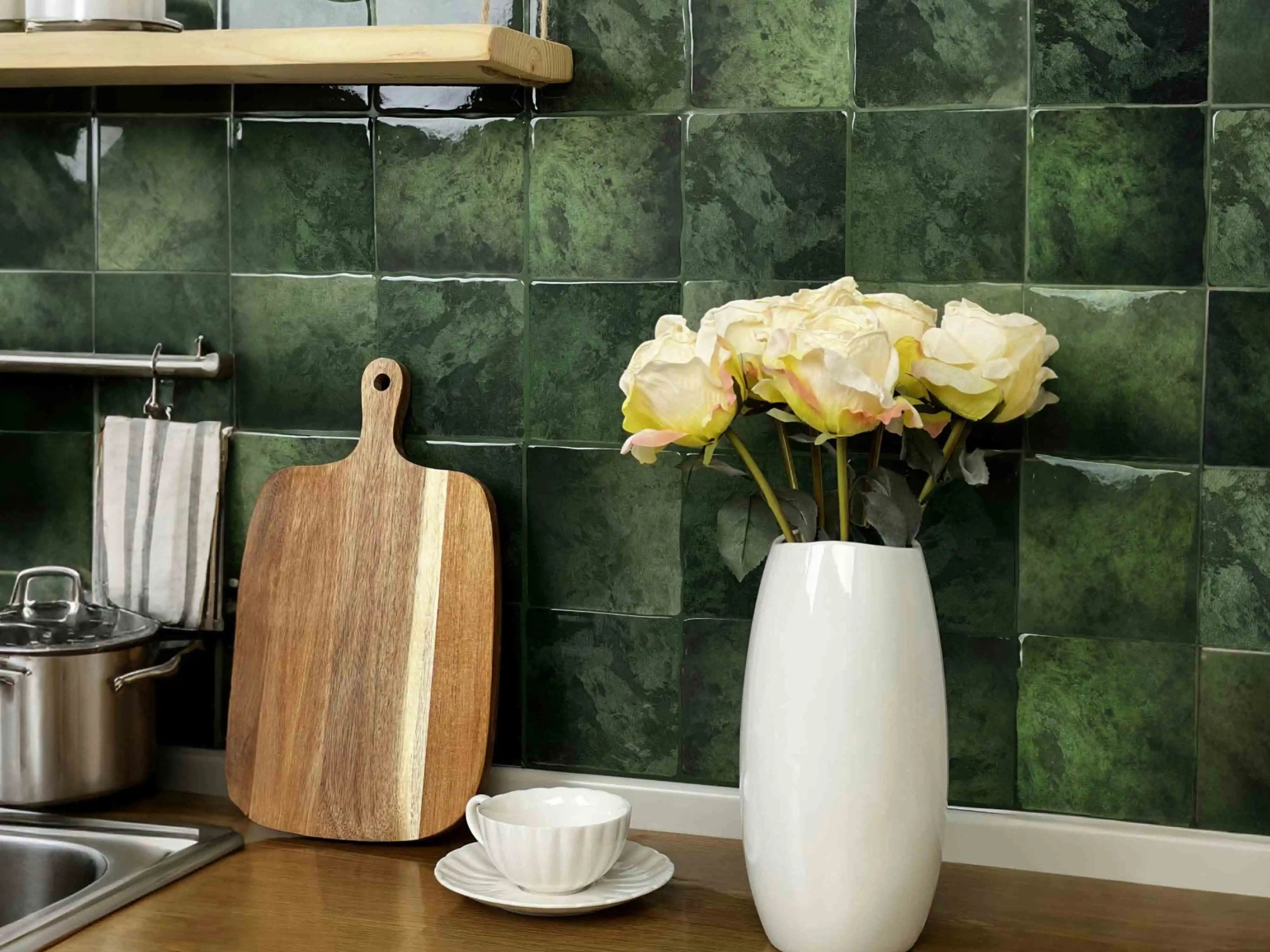
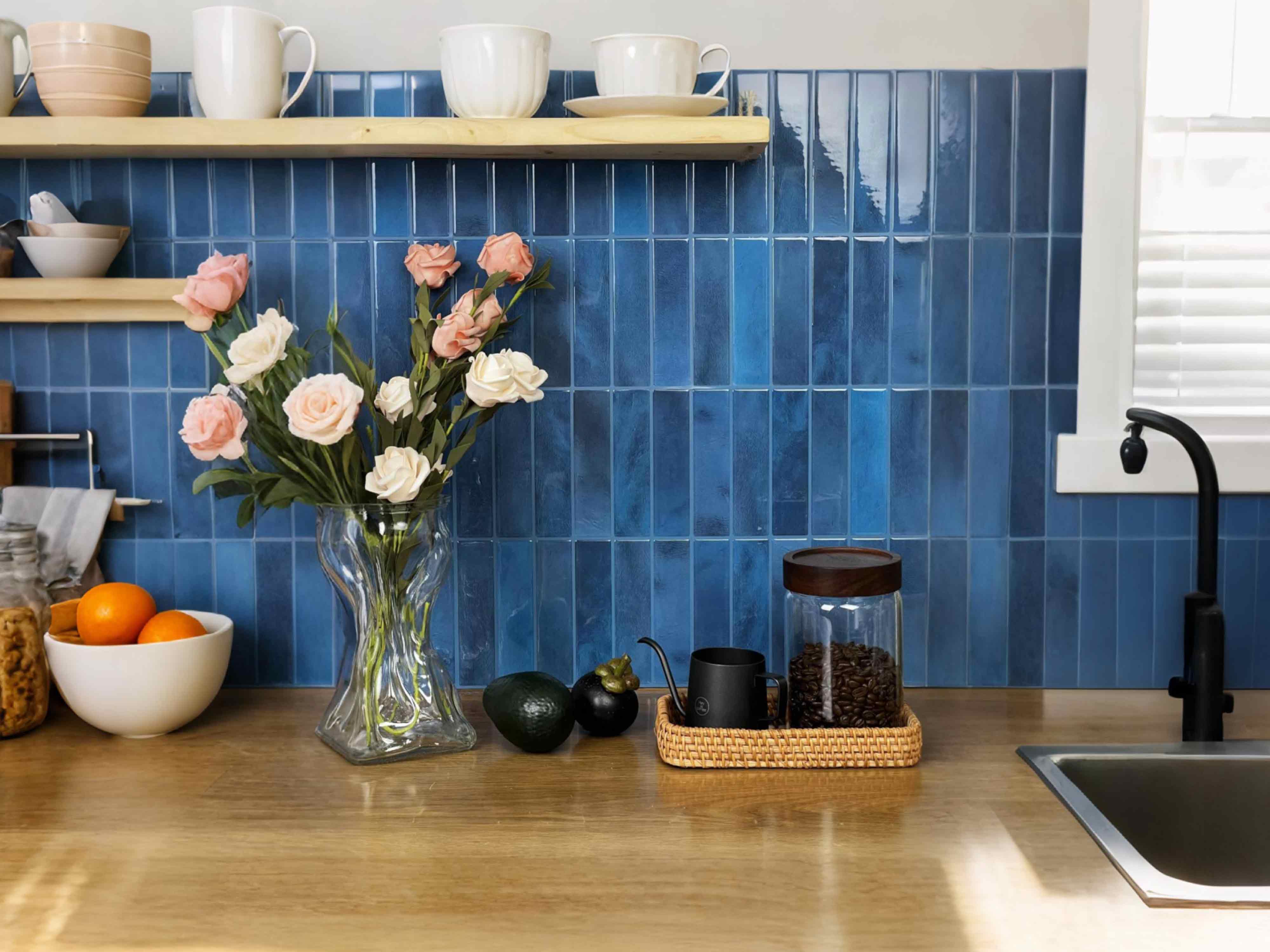
Hinterlasse einen Kommentar
Diese Website ist durch hCaptcha geschützt und es gelten die allgemeinen Geschäftsbedingungen und Datenschutzbestimmungen von hCaptcha.